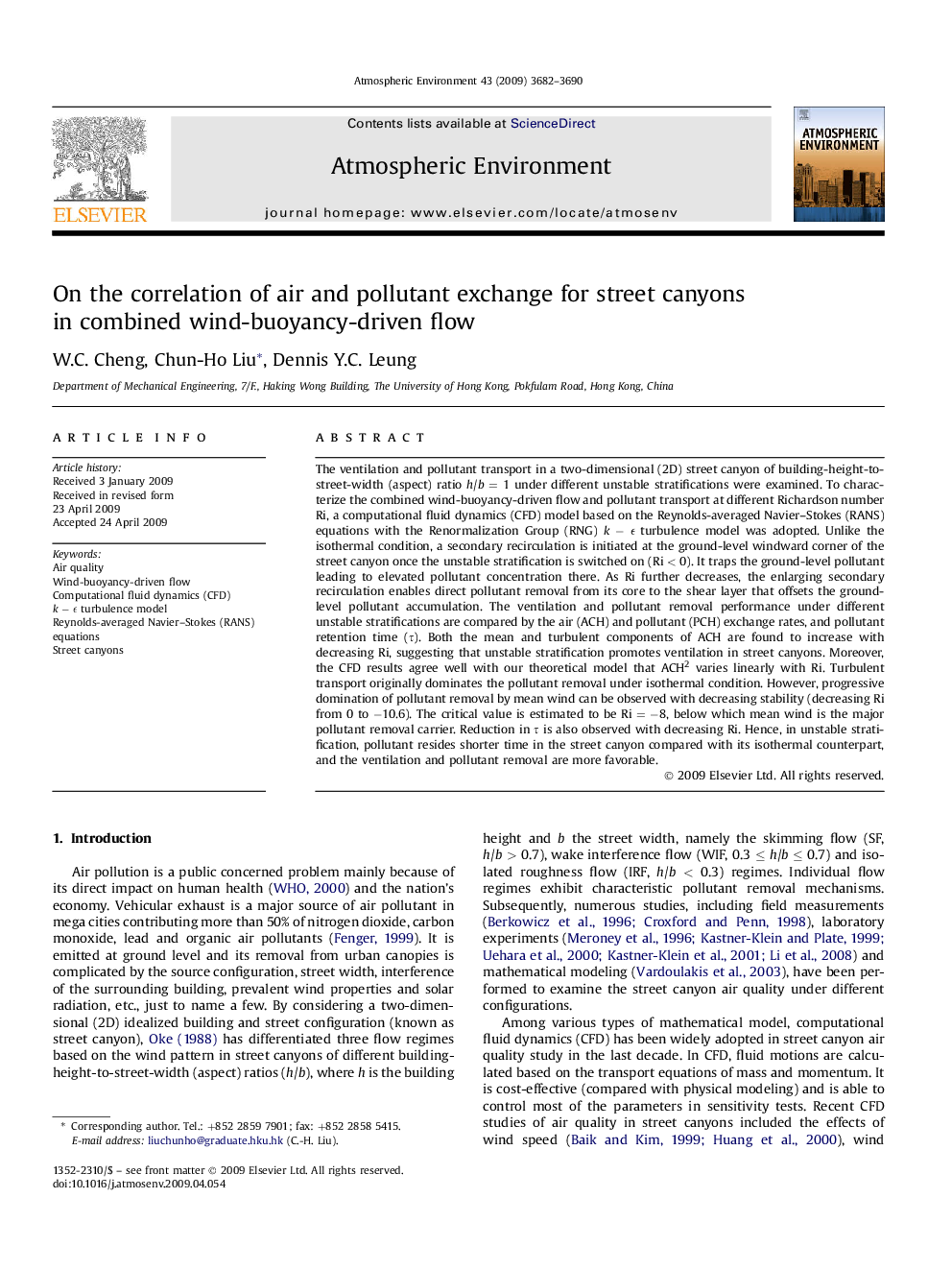| Article ID | Journal | Published Year | Pages | File Type |
|---|---|---|---|---|
| 4441679 | Atmospheric Environment | 2009 | 9 Pages |
The ventilation and pollutant transport in a two-dimensional (2D) street canyon of building-height-to-street-width (aspect) ratio h/b = 1 under different unstable stratifications were examined. To characterize the combined wind-buoyancy-driven flow and pollutant transport at different Richardson number Ri, a computational fluid dynamics (CFD) model based on the Reynolds-averaged Navier–Stokes (RANS) equations with the Renormalization Group (RNG) k − ε turbulence model was adopted. Unlike the isothermal condition, a secondary recirculation is initiated at the ground-level windward corner of the street canyon once the unstable stratification is switched on (Ri < 0). It traps the ground-level pollutant leading to elevated pollutant concentration there. As Ri further decreases, the enlarging secondary recirculation enables direct pollutant removal from its core to the shear layer that offsets the ground-level pollutant accumulation. The ventilation and pollutant removal performance under different unstable stratifications are compared by the air (ACH) and pollutant (PCH) exchange rates, and pollutant retention time (τ). Both the mean and turbulent components of ACH are found to increase with decreasing Ri, suggesting that unstable stratification promotes ventilation in street canyons. Moreover, the CFD results agree well with our theoretical model that ACH2 varies linearly with Ri. Turbulent transport originally dominates the pollutant removal under isothermal condition. However, progressive domination of pollutant removal by mean wind can be observed with decreasing stability (decreasing Ri from 0 to −10.6). The critical value is estimated to be Ri = −8, below which mean wind is the major pollutant removal carrier. Reduction in τ is also observed with decreasing Ri. Hence, in unstable stratification, pollutant resides shorter time in the street canyon compared with its isothermal counterpart, and the ventilation and pollutant removal are more favorable.
